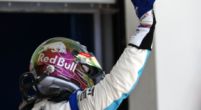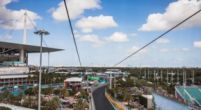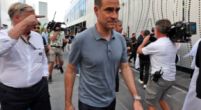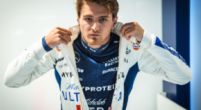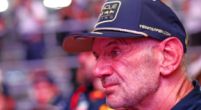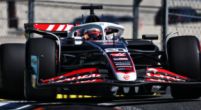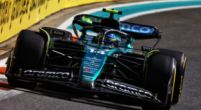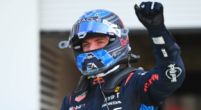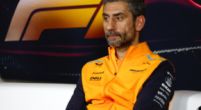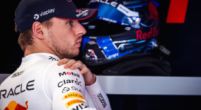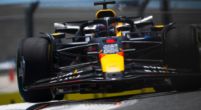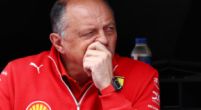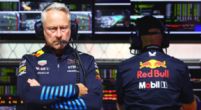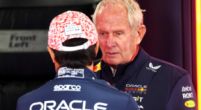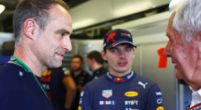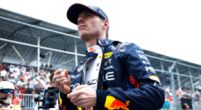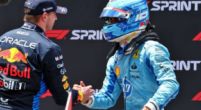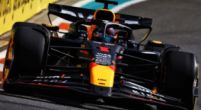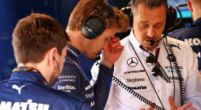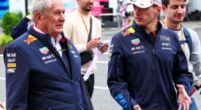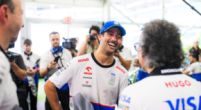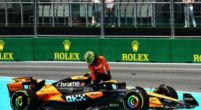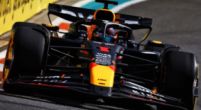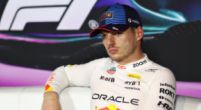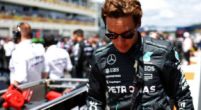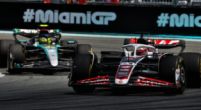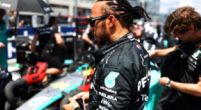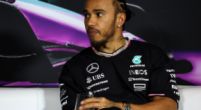Tech

F1 tech analysis | How McLaren could close in on Verstappen in Qatar
The second edition of the Qatar Grand Prix had prohibitive conditions not only for the cars but especially for drivers and team members: with an air temperature of around 37°C and 75% humidity, drivers felt bad in their cars. They were exhausted and limp at the end of the race. These tough physical conditions, along with the mandatory 18-lap stint strategy imposed by Pirelli and the track limits aspect, made this weekend extremely challenging for all the teams.
Despite these problems, Red Bull and McLaren managed to have the edge over their competitors due to their cars’ ability to make tyres last at an unmatched pace, allowing their drivers (except for Sergio Perez) to be on the podium both in the Sprint and in the main race. Max Verstappen was able to win his third World Championship on Saturday evening. There are some technical reasons behind the level of performance shown, and we’ll try to have a deep dive into them below in the article.
Red Bull and McLaren fought for the victory
Max Verstappen approached the weekend conscious that he could win his third title during the Sprint race on Saturday (needing only 3 points), and he didn’t disappoint by finishing second in the Sprint and dominating the race on Sunday. From a technical point of view, Red Bull (as did the majority of the teams) didn’t bring any specific upgrades this weekend because of the limited time to test them and find the right set-up for the car. The only changes were related to the wings, with a maximum downforce set-up chosen to suit the Losail International Circuit. This setup allows the cars to be quick in the long, fast corners and manage the tyres in the best way possible. For this reason, the Milton Keynes team decided to run the high downforce rear wing with a cut in the endplate transition, previously seen in Singapore.


Thanks to this set-up, the RB19 looked very well balanced from FP1 onwards, when the track was still very dirty, and the gusts of wind were causing problems for a lot of cars. They confirmed the level of performance during qualifying in the evening, with Verstappen who got pole with a 0.441 gap to Russell in P2 (since both McLarens saw their times deleted due to track limits).
After that, he was still complaining about the asphalt conditions that prevented him from improving his time during the last Q3 run, as he confirmed in the usual F1 post-quali interview: “I knew I had that lap already. So I just tried to push a little bit more and try to give it everything I have. The track surface at the moment, it doesn't let you push a tiny bit more. As soon as you stress it a little bit too much, it really snaps and you can't correct it. [...] I think we did the best we could, really. I think it's never going to be perfect. But clearly, it was good enough. And I was quite happy with the car in qualifying. [...] Then your whole weekend is ruined because you can't touch the car. And I think that is a bit of a shame”.
Securing P2 in the Sprint, the Dutch driver became World Champion for the third time, proving his ability to drive the excellent RB19, a dominant car as we rarely saw in the past. After Saturday, he went on to win the race with a near five-second advantage over Piastri, getting most of the laps led and the fastest lap at the end.
However, things don't seem to be going smoothly on the other side of the garage. Perez, in fact, struggled all weekend, failing to reach Q3 during Qualifying and only getting P10 at the end of the race (with a couple of penalties due to the track limits). This situation proves that the Mexican driver is struggling to find confidence with the RB19 after the last set of updates.
At the beginning of the year, with a more neutral car, he really managed to be on Verstappen’s pace (and sometimes even in front), but as the car development went on, he seemed to be struggling more and more, and his weekends became proper disasters. The hope is that Red Bull, now they have secured both titles, will focus on helping Perez in these last stint of races to find the solution to his problems with the car, especially for 2024.
As Horner himself pointed out after the race to GPblog: "The frustration is that we know what Checo has been capable of doing, and of course, last year and this year, he's contributed significantly to the Constructors' Championship. I think that we desperately want him to find that form, and as a team, we need him to. We can't afford to have a big split because if, as you would expect, the grid continues to concertina next year, we need both drivers delivering at the top of the game. [...] As I say, we're going to give all the support that we possibly can for Checo to find his form. You guys will beat him up enough, I'm sure, but we really want to see him achieve what we know he's capable of."
McLaren proved, once again, the big step forward they’ve made since Austria, with Piastri, who eventually won the Sprint race and with both drivers on the podium during the race on Sunday. Beyond the two stellar drivers, the MCL60 proved to be the second-fastest car in the race, with a great pace (almost matched with Verstappen’s pace in the last stint) and great speed through the fast corners. Since the beginning of the year, the car looked very quick in the high-downforce corners, and as they developed the car, this fact became even more evident. McLaren's 2023 car has a very stable aerodynamic platform and a very good mechanical setup (the only team with Red Bull to adopt a pull-rod front suspension and a push-rod rear suspension), which allows the team to run the car stiffer and closer to the ground.

They must work on aero efficiency to fight with Red Bull in 2024. On tracks like Monza, Spa or Baku, the Woking team suffered a lot because the car produced too much drag (and so lower speed) in the straights, resulting in P6 or P7 in the race.
Above all, this weekend can be considered as their best weekend this year, with the first “victory” and with a lot of points gained on the Aston Martin for the 4th place in the Constructors’ Championship, which would clearly be good progress, seeing where they were at the beginning of the year.
Mercedes quicker than Ferrari
Coming into this weekend, Mercedes and Ferrari were expecting a close battle among their drivers. Still, the race ended up with Geroge Russell finishing in front of Leclerc despite the early collision with his teammate Lewis Hamilton.
Since Friday, Mercedes seemed more comfortable on this track than the Ferraris, who struggled with a lot of oversteer in the high-speed corners. During the season, in fact, the W14 has always behaved really well on high downforce tracks with a lot of fast corners, like Barcellona, Silverstone and Melbourne. Their main problem is rear stability on tracks with a different variety of corners, like Suzuka, Bahrain or Austria, and they also lack a lot of straight-line speed, just like McLaren.
For this reason, they were expecting to be quick here, and both qualifying and the race confirmed their predictions, with Russell and Hamilton who qualified P2 and P3 respectively. Despite the early crash between them (with Hamilton retiring from the race and eventually giving his excuses), Russell managed to finish the race in 4th, with a very solid pace in the race. However, there’s a lot of regret seeing how quick they were because they could have been fighting for the podium with McLaren and thus gaining a lot of points on Ferrari in the Constructors' Championship.
Ferrari were on the back foot all weekend, struggling to warm up the tyres in qualifying and eventually burning through them during the race. Moreover, Sainz could not start due to a big leak in the fuel tank, which left Leclerc alone in the fight with the Mercedes. The Monegasque driver eventually finished the race in P5, limiting the damages and making Ferrari lose only two points to Mercedes.
New asphalt, track limits and sprint weekend
A final consideration concerns the FIA and FOM's decision to organise a sprint weekend for this event. It’s important to underline that F1 last raced in Qatar in 2021 with the old generation of cars. They already had problems with track limits and high and aggressive kerbs that caused broken chassis and tyre blowouts during the race.
These 2023 ground effect cars are known to be able to run as close to the ground as possible to be able to produce a lot of downforce, as long as track conditions allow it. This weekend, we saw complete chaos in FP1 onwards. The new asphalt provided less grip than the previous one and, together with all the dust and sand brought by the wind, cars were all sliding like crazy in the only session available to perfect the setup.
Furthermore, the new kerbs didn’t solve the track limits problem. In the fast sequence of 12-13-14, cars were still going over the limit, with the drivers not being able to feel that, which resulted in a lot of times deleted in qualifying and a lot of penalties during Sunday’s race. The other issue was related to the tyres: after a deep analysis, Pirelli found some micro-fractures on many sets on Friday, which were caused by the high and aggressive kerbs. To prevent any kind of blowout or safety problem, the FIA imposed an 18-lap maximum stint for the race. All these aspects made the race a proper countdown to all the pitstops, deleting the idea of tyre management or different strategies and making drivers push on their tyres all the race long.
In conclusion, all these problems and unexpected situations led to a chaotic weekend, which was very difficult to read and understand not only for the insiders and reporters but especially for all the fans watching the race at home.


